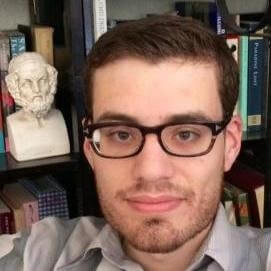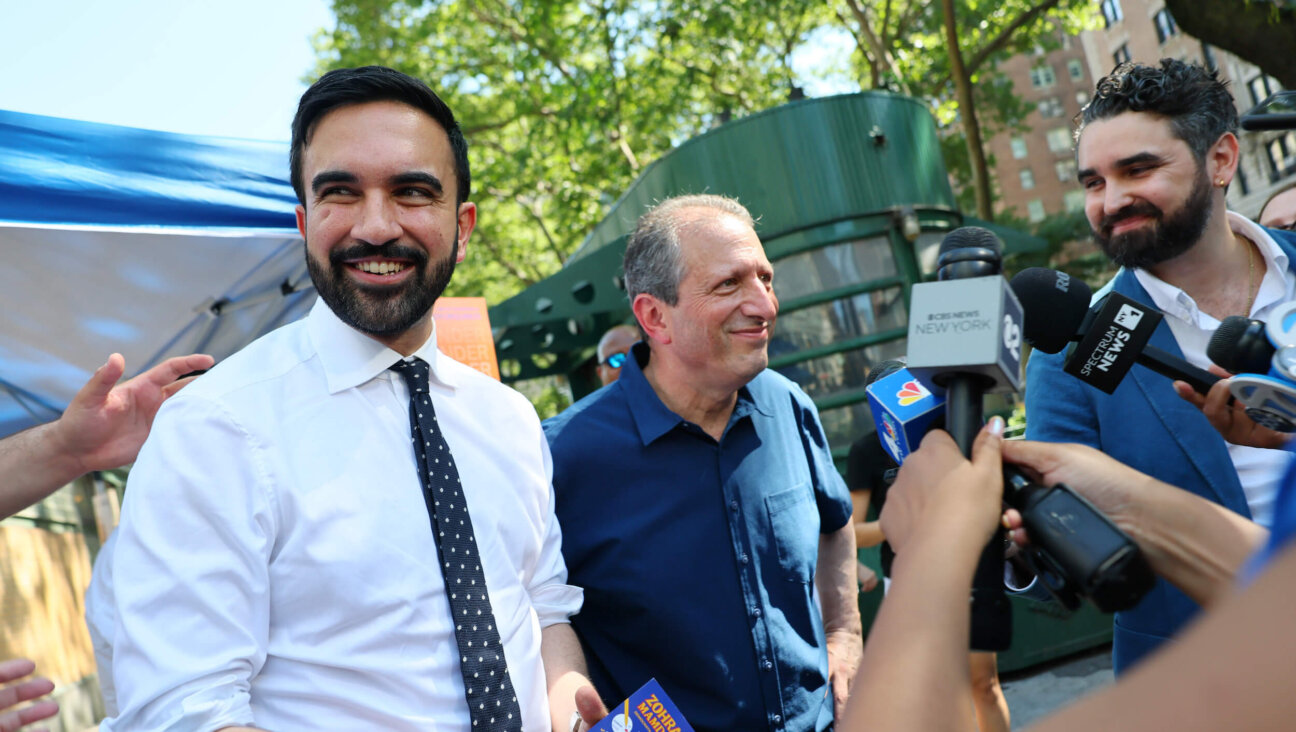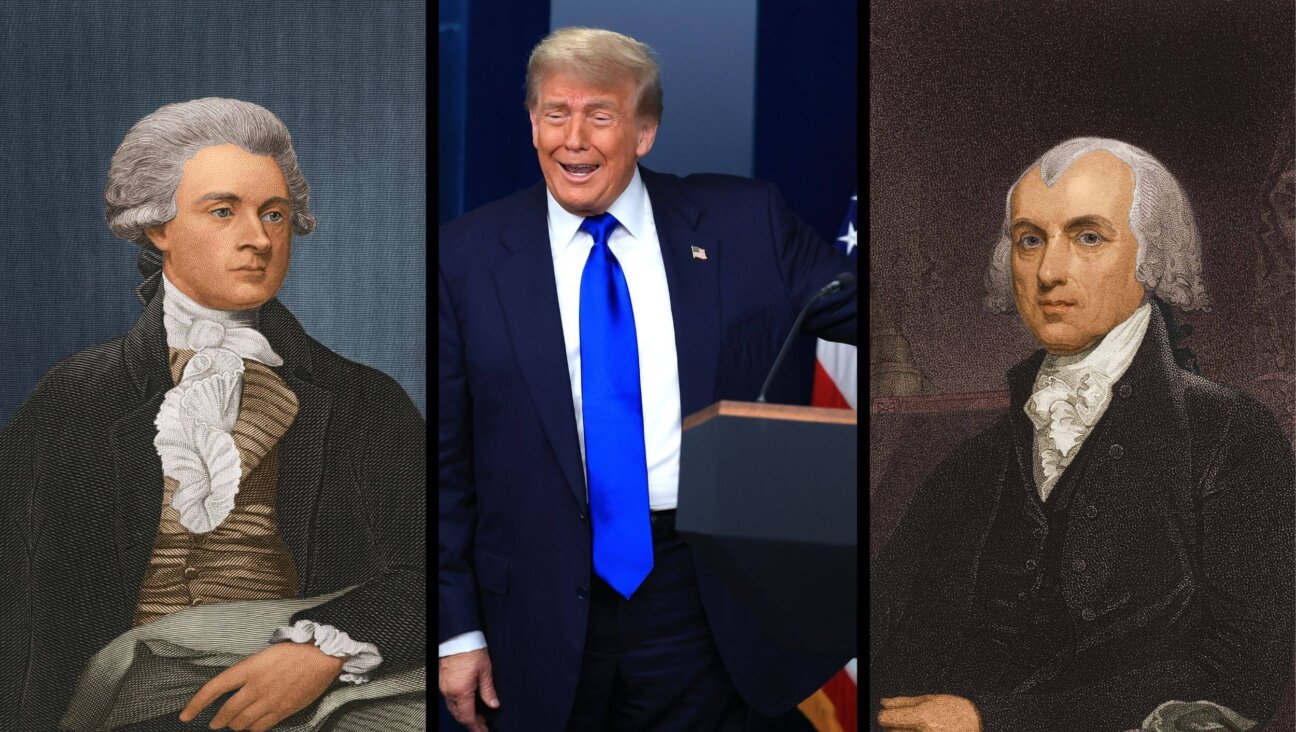Debate | Can you compare the Proud Boys to Antifa?

Image by Getty/Forward Montage
By almost all accounts, Tuesday’s debate between President Trump and Vice President Biden will be remembered most for the President’s refusal to condemn the anti-Semitic white supremacist group known as the Proud Boys. But the context of those words involved another controversial group altogether: Antifa.
Chris Wallace asked President Donald Trump to condemn white supremacists during the presidential debate. In response, the president called out ANTIFA as a “dangerous radical group,” saying “Proud Boys, stand back and stand by.”#PresidentialDebate2020 pic.twitter.com/zv580ODRdb
— FOX 13 Tampa Bay (@FOX13News) September 30, 2020
“You have repeatedly criticized the vice president for not specifically calling out Antifa and other left wing extremist groups,” Chris Wallace, the debate’s moderator, asked President Trump. “But are you willing tonight to condemn white supremacists?”
After persistent prodding, the President made his infamous comment: “Proud Boys, stand back and stand by.” And then he pivoted back to the left: “Somebody’s got to do something about Antifa and the left because this is not a right wing problem this is a left wing.”
Was the President’s comparison fair? Is it to compare the Proud Boys to Antifa? We asked our contributing columnists Ari Hoffman and Joel Swanson to debate the question.
Joel Swanson: It was one of the most jaw-dropping moments in what was otherwise a deeply disheartening, depressing, and underwhelming debate: Asked to condemn white supremacists, Trump issued what some have taken as a directive to the right-wing militia Proud Boys to “Stand back and stand by.” The Proud Boys and other right-wing militias have themselves certainly taken Trump’s comments this way, taking to social media to celebrate his refusal to denounce them, and former extremists say Trump’s words will directly embolden further far-right militia violence.
Ari, I know we share a deep disdain for the Proud Boys movement, and I’m sure Trump’s dog whistle to them made both of us equally physically ill. Where we might disagree is in the framing of the question, which was explicitly posed by Chris Wallace in terms of a supposed equivalency between far-right and far-left violence in the United States. What I want to suggest today is that the whole framing of this question is wrong, that it’s inappropriate to even suggest that there’s any sort of equivalency between Antifa on the far-left and militia groups like the Proud Boys and many others on the far-right, and that by even presenting the question in these terms, Chris Wallace was playing right into President Trump’s hands.

Joel Swanson Image by Noah Lubin
For starters, as Biden himself correctly noted in the debate last night, even the FBI director has conceded that Antifa is an ideology, not any sort of organized paramilitary group.
In contrast, again per the FBI, far-right paramilitary groups are highly organized and centralized, with the capacity to carry out specific, planned acts of violence and extremism. It’s why right-wing extremist groups were able to respond to Trump’s comments last night with formal celebration, something it’s impossible to imagine on the left had Biden had said something similar in their favor.
Secondly, and perhaps more importantly, there’s simply no equivalency in the level of violence for which the far-right militia movement and far-left groups such as Antifa have been responsible in the United States. Anti-fascists have committed zero murders in the United States in the past 25 years. In contrast, as the Anti-Defamation League has documented, 90% of the extremist murders committed in the U.S. in 2019 were committed by the far-right. That’s why the ADL itself, which has hardly been sympathetic to Antifa in the past, has nonetheless conceded that “it is important to reject attempts to claim equivalence between the antifa and the white supremacist groups they oppose,” because “right-wing extremists have been one of the largest and most consistent sources of domestic terror incidents in the United States for many years; they have murdered hundreds of people in this country over the last ten years alone.”
Meanwhile, to date, there has been just one single Antifa-related murder.
Perhaps as importantly, to the extent that there even is an Antifa network in the United States (and thanks to the FBI, I’m skeptical that there is), it isn’t looking to Joe Biden for leadership the way the far-right militia movement is looking to President Trump. Far leftists tend to see Joe Biden as just another part of the neoliberal capitalist edifice that needs to be overthrown, not as any sort of ally, whereas the far-right showed after last night’s kerfuffle that it sees President Trump as a tacit ally of its violent goals; the Proud Boys themselves called the debate “historic” and said it was already leading to “new recruits” to their violent movement. Then, of course, there’s the fact that while President Trump has hemmed and hawed on condemning far-right extremism throughout his entire presidency, Biden has in fact condemned Antifa, on multiple occasions. Biden simply isn’t an avatar for the far-left in this country in the way that Trump is for the far-right.
So for those reasons, there’s just no equivalency between far-right and supposed far-left extremism in the United States today, and even framing the question in terms of some tit-for-tat, where Biden has to condemn Antifa and Trump has to condemn white supremacists, is already playing directly into the far-right’s hands.
It’s worth noting that American Jews know this. There’s a reason why 54% of American Jews hold Trump and the Republican Party substantially responsible for rising antisemitism in the United States, compared to only 18% who feel that way about the Democratic Party. And a poll of American Jews taken over the summer by the Jerusalem Center for Public Affairs found that 52% of American Jews think the dominant threat from antisemitism in the United States today comes the far-right, compared to only 1% who think that about the left, and 12% who think it comes equally from left and right.
American Jews know there’s no equivalency here, even if Chris Wallace at the debate did not.
At a moment when the FBI itself is saying white supremacists are the greatest terror threat the US now faces, it’s time to reject any comparison between left-wing and right-wing extremists. Antifa is not the Proud Boys, and any attempt to frame the situation that way actively makes Jews and other minority communities less safe.
Ari Hoffman: Joel, something about last night felt unique. In a year where so much seems adrift, this looked like the wheels coming off our Republic in real time. A line from Philip Roth’s “American Pastoral” kept popping into my head: “the indigineous American berserk.” What Roth meant and what Trump demonstrated is that there is a part of our national culture that is simmering on the edge of violence, that is angry and aggrieved, and thinks the road to restoration is best decorated by breaking things along the way.
President Trump’s language last night that white nationalists “stand down and stand by” should set off deafening alarm bells in every American’s head. White supremacists are a cancer, and they should neither stand down nor stand by, but be eradicated from our political landscape.

Ari Hoffman | artist: Noah Lubin
At the same time, I think that forcing Americans to rank the threats that come from the toxic edges of our politics is the wrong strategy. This summer has shown us that the threats to American democracy are morphing just as fast as COVID-19, and seemingly share its contagious quality.
I think condemning both the Proud Boys and Antifa is a position that is not only defensible, but that is necessary if we are to rebuild our society on surer footing.
I feel this way because I take seriously the growing echoes between our moment and Weimar Germany, as Andrew Sullivan and others have noted. Our institutions are weak, our norms are faltering, and the famous line from the W.B. Yeats poem rings truer every day: “The best lack all conviction, and the worst are full of passionate intensity.”
The extremes do battle in the streets, and each try to impose their visions of heavens, leaving us to live in hell.
On top of the ruins of our decayed civic culture, newer and more strident ideologies are grappling for dominance. These include the inchoate dogmas of a wokeness that inspires religious fervour, a hard left that has torched cities and undone neighborhoods, and a poisonous mixture of rancid populism and white nationalism that is coming in from the cold, even as it leaves many of us shuddering.
Why do I continue to believe that Biden must condemn both Antifa and the Proud Boys? Because I simply watched what transpired this summer. And here is what my eyes saw: a majority of peaceful protests to be sure, but also a spasm of violence that was real and sustained and widespread, and that convulsed whole swaths of American cities in anarchy and violence.
More than anyone, Jews know the horrific cost of white nationalism. But I also think about the terrorized shopkeepers in Seattle, Portland, Kenosha, and elsewhere, the burning buildings and looted convenience stores. I think of elite radicals justifying violence, and the intellectual theoreticians of chaos. And I worry.
Like antisemitism, no side owns a monopoly on rage. And that means we have to keep both eyes wide open. Jews know in their bones that the far left and the far right have equal designs on their bodies and souls. Americans should feel no differently.
Joel Swanson: Ari, thanks for the response, but here is where our perspectives begin to diverge, much as we may share in our distaste for the Proud Boys movement and for the president’s despicable and cowardly refusal to condemn them during the debate. I appreciate your invocation of Philip Roth’s “indigenous American berserk,” a phrase that I find popping into my head often these days as well, and which captures something uniquely disturbing and uniquely American about our moment.
But the fact is, Roth wrote “American Pastoral” about the 1960’s, when there was, quite simply, far more left-wing violence than there is today. It might have been reasonable at that time to look at the country and demand an equal condemnation of left- and right-wing extremist violence. But that simply isn’t the situation we find ourselves in today.
Today, as the Anti-Defamation League has documented so ably, nearly all the extremist violence we face comes from the far-right – a threat assessment echoed by the FBI itself. Whatever you may think of overly woke professors on university campuses, no one is dying because of their actions, and no one is dying because of Antifa, either.
These are simply not in any way equivalent threats, and refusing to name the far-right as the predominant threat that it is helps no one, least of all Jews. There’s a reason why the American Jewish Committee finds that four out of five American Jews consider the extreme right to present a serious threat to Jewish safety in the United States today, compared to only one-third who think that about the extreme left. You say “no side owns a monopoly on rage,” but the rage of one side of the political spectrum is simply erupting into violence right now a lot more than the rage of the other.
Name the threat for where it’s coming from, and it isn’t the left.
Unfortunately, our own establishment institutions struggle with this. Yesterday afternoon, hours before the debate, the Jewish Democratic Council released an advertisement doing precisely that, comparing America today to the rise of fascism in the early 1930’s.
It was a deeply powerful ad, intercutting footage from fascist brown shirt rallies from the 1930’s with footage from such events as the 2017 Charlottesville “Unite the Right” white supremacist rally, which we all remember the president infamously saying included some “very fine people.” It was a perfect example of showing how history may not perfectly repeat, but it rhymes, that when you have the president of the United States dog whistling to far-right paramilitary groups and militias, this is going to lead to rising ethno-nationalism and far-right violence, and these groups will hear this tacit support for what it is.
And yet, instead of saluting this advertisement for making painful but necessary historical comparisons, the response from most of the official organs of the American Jewish community was to condemn the Jewish Democratic Council ad as hyperbolic and overheated. On Twitter, Jonathan Greenblatt, CEO of the Anti-Defamation League, called the ad “deeply offensive to the memories of 6M+ Jews systematically exterminated during the Shoah,” while the American Jewish Committee said that the ad would “trivialize the memories of both victims and survivors.”
The video from @USJewishDems is the latest in growing references to Hitler, Goebbels or other Nazi leaders. This has no place in the presidential race and is deeply offensive to the memories of 6M+ Jews systematically exterminated during the Shoah. https://t.co/pvO89COrI6
— Jonathan Greenblatt (@JGreenblattADL) September 29, 2020
Of course, just hours later, both organizations were justifiably horrified by the President’s support for the Proud Boys right-wing militia. The AJC rightfully told President Trump that “Bigots, racists, and antisemites are rejoicing at your refusal to condemn white supremacy,” while Jonathan Greenblatt of the ADL insisted that the president “owes America an apology or an explanation. Now.” And the ADL itself pointed out that the president’s words would embolden the Proud Boys, noting that they got a lot more attention on social media from people who might not have heard of them before the debate.
So I ask today: Isn’t this a moment for reflection from the American Jewish community? Shouldn’t the fact that, just hours after they got upset about a comparison between the rise of fascism in Germany and the president of the United States, that president legitimated such comparisons by directly dog whistling to far-right militias, cause these organizations to ask some questions? And might responding to the historical moment that we’re in require the leadership of the American Jewish community to be a little more explicitly partisan than it has been in the past?
Ari Hoffman: Joel, you’ve powerfully and eloquently made the case for the real and present danger of right wing extremism in this country, and I am in agreement that what we witnessed last night is a troubling affinity between the holder of the highest office in the land and the most noxious element of society. I hope that “stand down and stand by” comes to stand in infamy.
I take a slightly different lesson from Weimar than you do. Yes, the destination of the story is of the ascendance of a totalitarian right that brought misery to the world. But the means by which it happened was a society unmoored and cleaved into extremes, with a far left that refused compromise and so created the conditions for Hitler’s ascendance.
Over the course of this primary, I have been making the case for a politics of the center. The avatars of this are all imperfect (remember Mike Bloomberg?) but the logic is, I believe, sound: The path beyond Trump can’t lie in imitating him, but in isolating and rejecting his blueprint and playbook.
The more of us can come together to do that, the safer we’ll be. How tragic if in swapping Trump for the hard left, we repeat history, first as tragedy and then as more tragedy?
As is evident from just our discussion, the work of drawing analogies from the past into the present is always bound to strike some as essential and others as inappropriate. There are no higher stakes, and disputes more inevitable, than when the Holocaust is involved.
My general position is that prudence is the best course of action. Undoubtedly, history echoes. But just as those on the left criticized Prime Minister Benjamin Netanyahu for consistently evoking 1938 in relation to the threat to Israel from Iran, the differences between this moment and that moment are just as salient as the differences.
We may not live in the best of all possible worlds, but I don’t yet think we are living in the worst. Let’s keep it that way.
Ari Hoffman is a contributing columnist at the Forward and an Adjunct Assistant Professor at N.Y.U. He holds a doctorate in English Literature from Harvard and a law degree from Stanford.
Joel Swanson is a contributing columnist for the Forward and a Ph.D. student at the University of Chicago, studying modern Jewish intellectual history and the philosophy of religions. Find him on Twitter @jh_swanson.
























